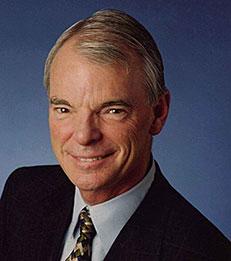Opinion
Four Certainties About Populist Economics
—


In the next few months, we will learn more about whether the recent uptick in economic optimism is robust; whether Trump’s efforts to fight offshoring and boost growth and employment have a long-term impact; and whether protectionism prevails.
By A. Michael Spence
Successful economic globalization requires reasonably successful growth patterns in individual countries. That dynamic characterized the 30 years or so after World War II: growth rates were relatively high across a wide range of countries; their benefits were broadly shared within countries; and the rise of developing countries reduced global inequality. This period was arguably the heyday of globalization.
Of course, globalization continued through the 1970s and beyond. But the underlying growth patterns changed. Driven by the labor arbitrage embedded in economic globalization and the rise of disruptive digital technologies, advanced economies’ middle-class manufacturing jobs disappeared, their median incomes stagnated, and job and income polarization grew, even as GDP growth remained strong. This new pattern – which persisted through the 1980s and 1990s, and accelerated after 2000 – caused inequality to rise sharply, weakening the foundations of globalization.
Countries’ responses have varied widely. Some have taken steps to reduce inequality, such as redistribution through the tax system, social security and education systems, various kinds of social protection, and support for effective retraining. The potency of such efforts tends to be shaped by cultural norms, the institutional bargaining power of labor, the level of trust between labor and business, and the influence of individual and corporate wealth on politics.
Read the full article as published in Project Syndicate.
__
A. Michael Spence is a William R. Berkley Professor in Economics & Business.
Of course, globalization continued through the 1970s and beyond. But the underlying growth patterns changed. Driven by the labor arbitrage embedded in economic globalization and the rise of disruptive digital technologies, advanced economies’ middle-class manufacturing jobs disappeared, their median incomes stagnated, and job and income polarization grew, even as GDP growth remained strong. This new pattern – which persisted through the 1980s and 1990s, and accelerated after 2000 – caused inequality to rise sharply, weakening the foundations of globalization.
Countries’ responses have varied widely. Some have taken steps to reduce inequality, such as redistribution through the tax system, social security and education systems, various kinds of social protection, and support for effective retraining. The potency of such efforts tends to be shaped by cultural norms, the institutional bargaining power of labor, the level of trust between labor and business, and the influence of individual and corporate wealth on politics.
Read the full article as published in Project Syndicate.
__
A. Michael Spence is a William R. Berkley Professor in Economics & Business.
